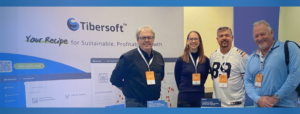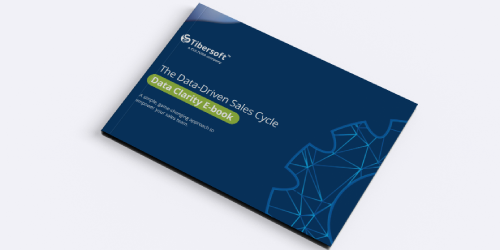Data is one of the most valuable assets in the foodservice industry. But how do you truly access the full potential of that data to drive Return on Your Data Investment (RODI)? In our recent webinar with the International Foodservice Manufacturers Association (IFMA), some key insights surfaced about how RODI can be leveraged to drive smarter business decisions, optimize processes, and enhance sales.
But first, meet our speakers:
 Connect with them on LinkedIn: Chirs Hart, Suzanne Cwik, Scott Gosselin and Michelle Young.
Connect with them on LinkedIn: Chirs Hart, Suzanne Cwik, Scott Gosselin and Michelle Young.
Here are the six most important things you should know about RODI:
1. Stop Guessing – Measure Your Initiatives
Too often, we move from one promotion or initiative to the next without ever measuring how successful they were. It’s common to dive into the next campaign and assume that because sales went up, the previous one was a success. But without hard data, it’s just guesswork.
RODI changes that by connecting the dots between your sales data and initiatives. You can’t improve what you don’t measure, and through tools like Tibersoft, you can easily track how specific promotions or initiatives perform. By linking your CRM data and purchase data, you’ll know what’s driving actual sales—and what isn’t—so you can refine your strategy for the next big push.
“It’s not just a silo over here with the CRM and a silo over here with the purchase data; it’s marrying those two together to see what the return was on those initiatives.” – Michelle Young, National Accounts Sales Manager, Smithfield
2. Automate and Simplify – Stop Wasting Time on Manual Reporting
A lot of companies still rely on manual processes to track sales and performance. Whether it’s Excel spreadsheets or retail-oriented systems not built for foodservice time-consuming manual reporting is a problem that bogs teams down.
Automation is a necessity. Automating dashboards, reports, and data updates saves hours of work and reduces errors. The more time your team spends in front of a screen, the less they’re engaging with customers and driving sales. With automated data solutions, you get a consistent, up-to-date view of your performance without the grunt work.
“Honestly, it’s more efficient and effective for the broader sales team to use these turnkey dashboards rather than having to dig through the data and spend hours on their laptops rather than being out in front of customers.” – Scott Gosselin, Vice President of Sales, Aspire Bakeries
3. Build Trust in Your Data – Avoid Multiple Versions of the Truth
Nothing kills a data-driven strategy faster than a lack of trust in the data. If your sales teams are pulling reports and seeing different numbers depending on who’s creating them, trust erodes, and people stop using the tools altogether.
One of the biggest advantages of our approach at Tibersoft is creating a “single source of truth” for your data. Whether it’s shipments, distributor data, or internal classifications, having a consistent, reliable dataset that your team trusts is crucial. Once everyone is working from the same numbers, you’ll see much better adoption of your data tools and more effective decision-making.
“Trying to answer the same exact question but getting two different answers creates a trust problem. Lack of trust is one of the worst things that can happen in any data project.” – Chris Hart, VP, R&D Operations, Tibersoft
4. Don’t Just Collect Data – Curate It
Collecting data isn’t enough. A critical takeaway from the webinar was the idea of curating data. The foodservice industry generates tons of data, but raw data is messy and often overwhelming. You need to shape and refine it to make it useful.
Instead of getting lost in a flood of numbers, focus on curating data that answers the most important questions for your business. Which products are underperforming? How are GPOs or distributors affecting your bottom line? By creating focused, curated reports, you get insights that drive real decisions and actions. In other words, data curation makes your data work for you, not the other way around.
“It’s having the right people and processes or partners to help you transform raw data into usable curated insights.” – Suzanne Cwik, Director of Professional Services, Tibersoft
5. Plan for the Future – Data is Your Competitive Advantage
The foodservice industry is more competitive than ever, and everyone is looking for that extra edge. Leveraging data strategically can be the key differentiator. Real growth rates may be slow, but the companies that are winning are the ones that have invested in their data analytics.
As your business evolves, your data strategy needs to scale with it. Whether you’re looking to better manage your distributor relationships, understand customer behaviors, or optimize non-commercial accounts, investing in the right tools now will give you a significant advantage down the road. The future of foodservice will be data-driven, and those who start now will be the ones leading the charge.
“You want to adopt scalable data infrastructure or partner with a vendor that can grow and evolve with your organization’s needs. Because we know that the only constant, as they say, is change. And that’s particularly true within our industry and within technology.” – Suzanne Cwik, Director of Professional Services, Tibersoft
6. Data is a Top Priority – and Turning It into Actionable Insights Doesn’t have to be a Struggle
Leveraging data is clearly a critical area for improvement within the foodservice industry. But while there’s a growing awareness of the power of data, the challenge lies in turning it into actionable insights.
64% of professionals in our IFMA webinar said data overwhelm and silos are their biggest obstacles.
You may be sitting on vast amounts of data, but how much of it are you actually using to drive decision-making? Simply collecting data isn’t enough —it’s about being able to slice through it and find out what’s really driving sales, growth, and customer loyalty.
This is where RODI makes a difference. It bridges the gap between raw data and actionable insights, ensuring the information you gather isn’t just filling up reports but actively steering your business decisions.
Tracking ROI Remains a Pain Point in Measuring Sales Performance
Another major challenge in the foodservice industry is tying sales performance back to specific data sets. And this is something we see all the time at Tibersoft—clients struggling to measure the ROI of their sales initiatives.
It’s not enough to know that sales are going up or down—you need to understand why. Without tracking the right data all the way from the point of sale to how it impacts revenue, it’s impossible to know whether your sales initiatives are delivering real value.
A big part of RODI is solving exactly this problem. It helps foodservice companies track the performance of their initiatives down to the finest detail, giving you a clear picture of what’s working and what’s not. Measuring sales performance may be a common struggle, but with the right approach, it doesn’t have to be.
Closing Insights
Data is undoubtedly your organization’s most valuable asset—but its true potential is realized through effective management and application. Instead of letting data overwhelm you, harness it to create actionable insights that inform your decisions. RODI not only empowers you to track the effectiveness of your initiatives but also ensures that every decision you make is backed by solid data. Embrace RODI and transform your data into a powerful tool for driving real growth.
WANT TO LEARN MORE? Watch the webinar recording here or get in touch!





